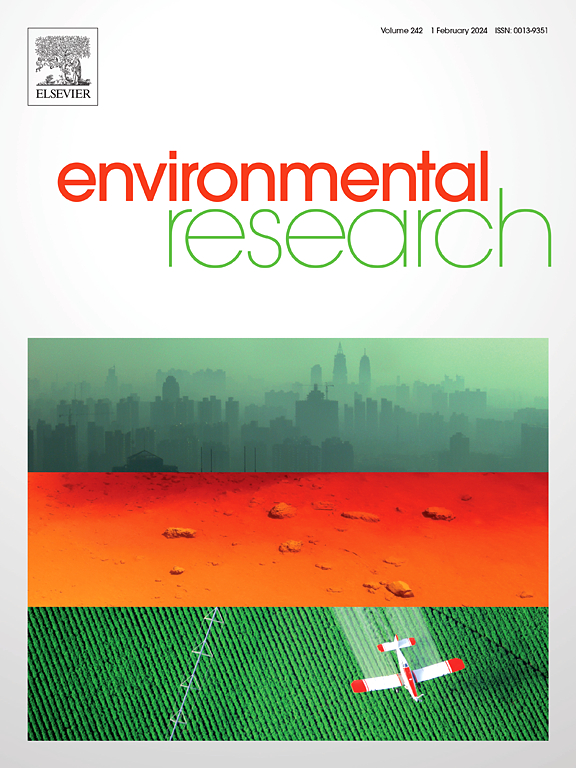Assessing playgrounds ultraviolet radiation (UVR) environments in College Station, Texas: Creating UVR-safe environments for children
IF 7.7
2区 环境科学与生态学
Q1 ENVIRONMENTAL SCIENCES
引用次数: 0
Abstract
The design of playground environments significantly influences children's exposure to Ultraviolet Radiation (UVR), which impacts long-term health. Excessive UVR exposure can lead to serious health issues such as skin cancer. Adequate UVR is crucial for vitamin D synthesis, which supports cardiovascular and skeletal development. This study evaluates the effectiveness of current playground designs in providing a healthy UVR environment by collecting 3-dimensional UVR measurements from eight playgrounds in College Station, Texas, across four seasons. We assessed UVR exposure based on two key metrics: the Minimal Erythema Dose (MED) and the Minimal Vitamin D Dose (MDD). Our findings reveal non-neglectable UVR from the southern sky, particularly during the fall and winter. Trees and a combination of artificial canopies and trees offer more uniform UVR protection compared to other shade structures. During summer, children in College Station face a high risk of excessive UVR exposure, potentially leading to sunburn or skin redness, even under artificial canopies. Conversely, in winter, children may receive insufficient UVR during a 1-h outdoor period, especially under central artificial shades. Based on these observations, we recommend several design solutions to enhance UVR protection, including site-specific UVR evaluations before design, the use of seasonally adjustable shade structures, and strategic planning of children's activities and exposure times according to seasonal and UVR conditions.
评估德克萨斯州大学城操场紫外线辐射(UVR)环境:为儿童创造UVR安全环境
游乐场环境的设计显著影响儿童的紫外线暴露,从而影响儿童的长期健康。过度暴露在紫外线下会导致严重的健康问题,比如皮肤癌。充足的紫外线辐射对维生素D的合成至关重要,维生素D有助于心血管和骨骼的发育。本研究通过收集德克萨斯州大学城八个操场四季的三维UVR测量数据,评估了当前操场设计在提供健康UVR环境方面的有效性。我们基于两个关键指标评估UVR暴露:最小红斑剂量(MED)和最小维生素D剂量(MDD)。我们的发现揭示了南方天空中不可忽视的紫外线辐射,特别是在秋冬季节。与其他遮荫结构相比,树木以及人工树冠和树木的组合提供了更均匀的紫外线防护。在夏季,大学城的孩子们面临着过度暴露在紫外线下的高风险,即使在人造遮阳篷下,也可能导致晒伤或皮肤发红。相反,在冬季,儿童在户外,特别是在中央人工遮阳下,1小时的紫外线照射可能不足。基于这些观察结果,我们推荐了几种增强UVR防护的设计解决方案,包括在设计前对特定地点的UVR进行评估,使用季节性可调节的遮阳结构,以及根据季节和UVR条件对儿童的活动和暴露时间进行战略规划。
本文章由计算机程序翻译,如有差异,请以英文原文为准。
求助全文
约1分钟内获得全文
求助全文
来源期刊

Environmental Research
环境科学-公共卫生、环境卫生与职业卫生
CiteScore
12.60
自引率
8.40%
发文量
2480
审稿时长
4.7 months
期刊介绍:
The Environmental Research journal presents a broad range of interdisciplinary research, focused on addressing worldwide environmental concerns and featuring innovative findings. Our publication strives to explore relevant anthropogenic issues across various environmental sectors, showcasing practical applications in real-life settings.
 求助内容:
求助内容: 应助结果提醒方式:
应助结果提醒方式:


